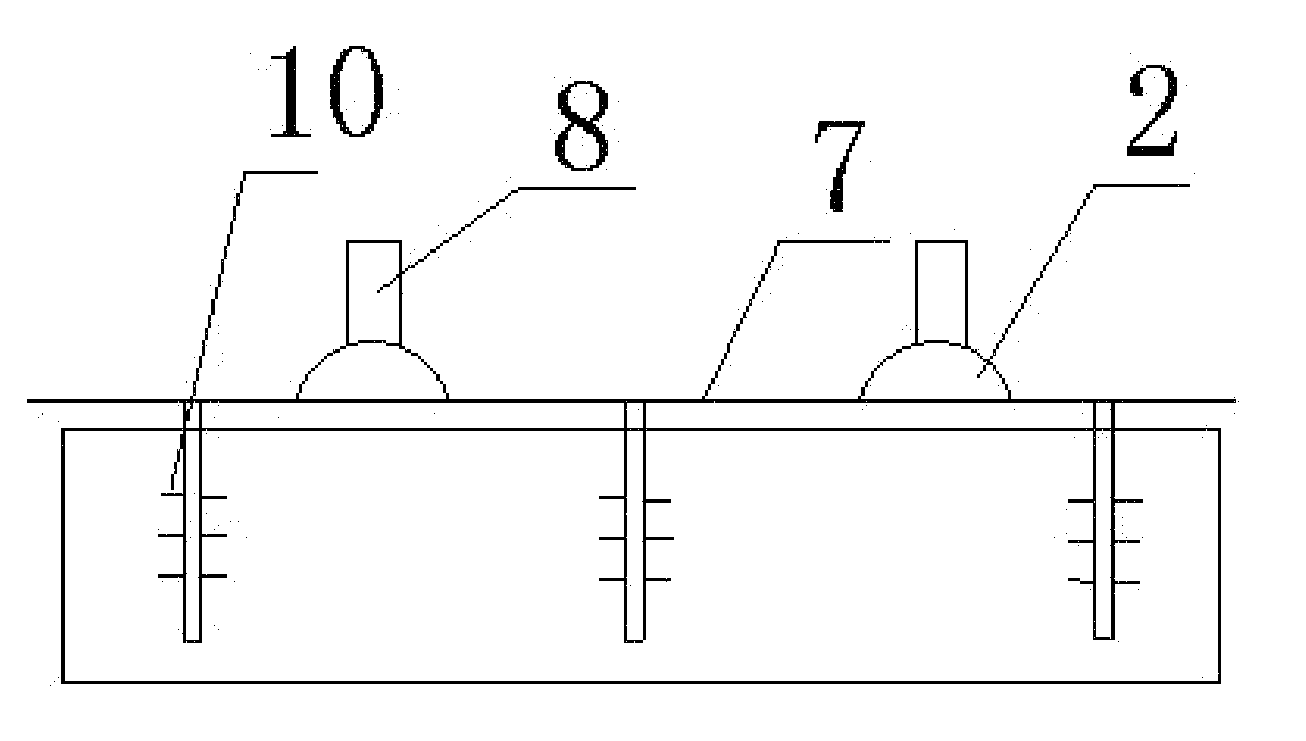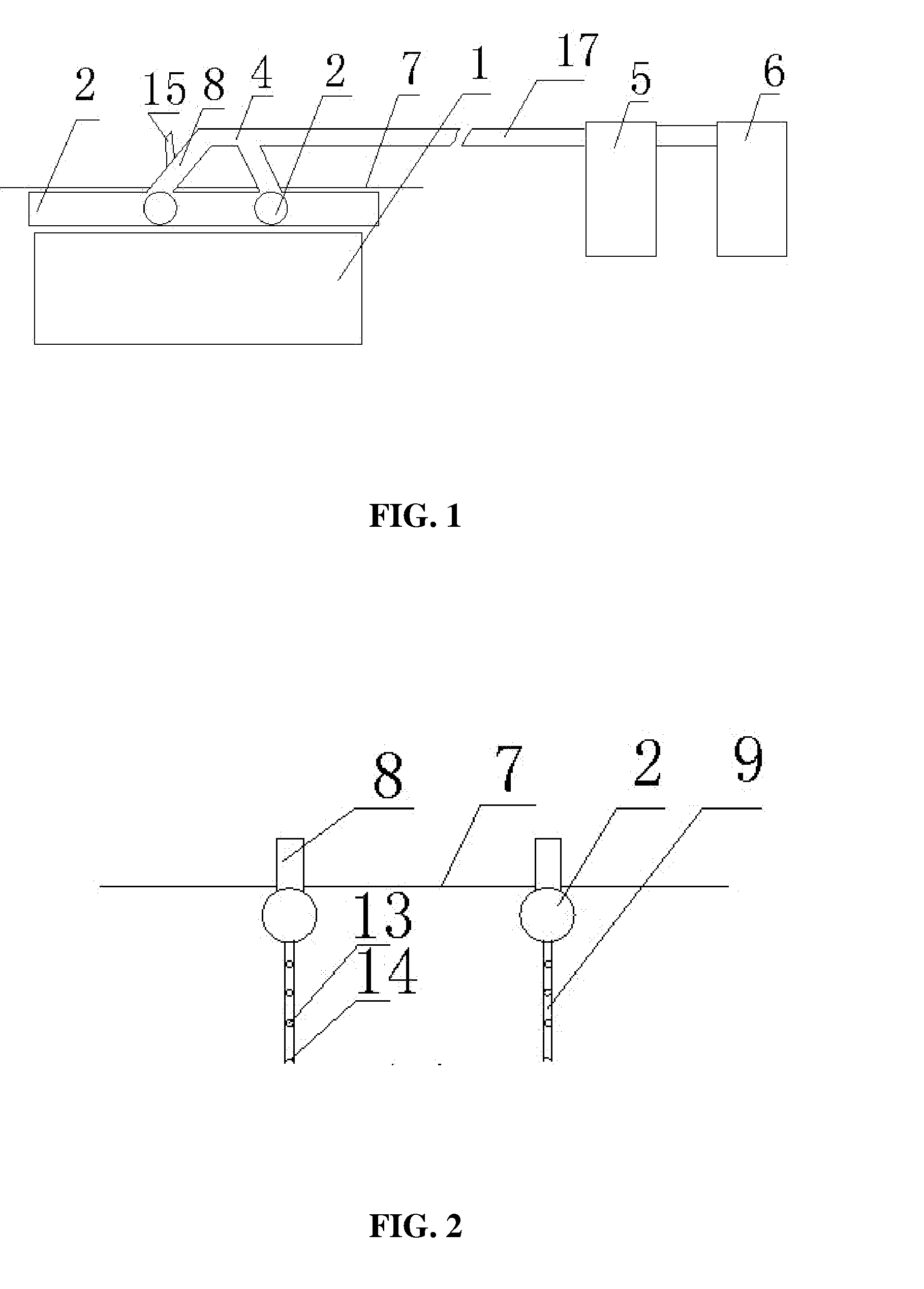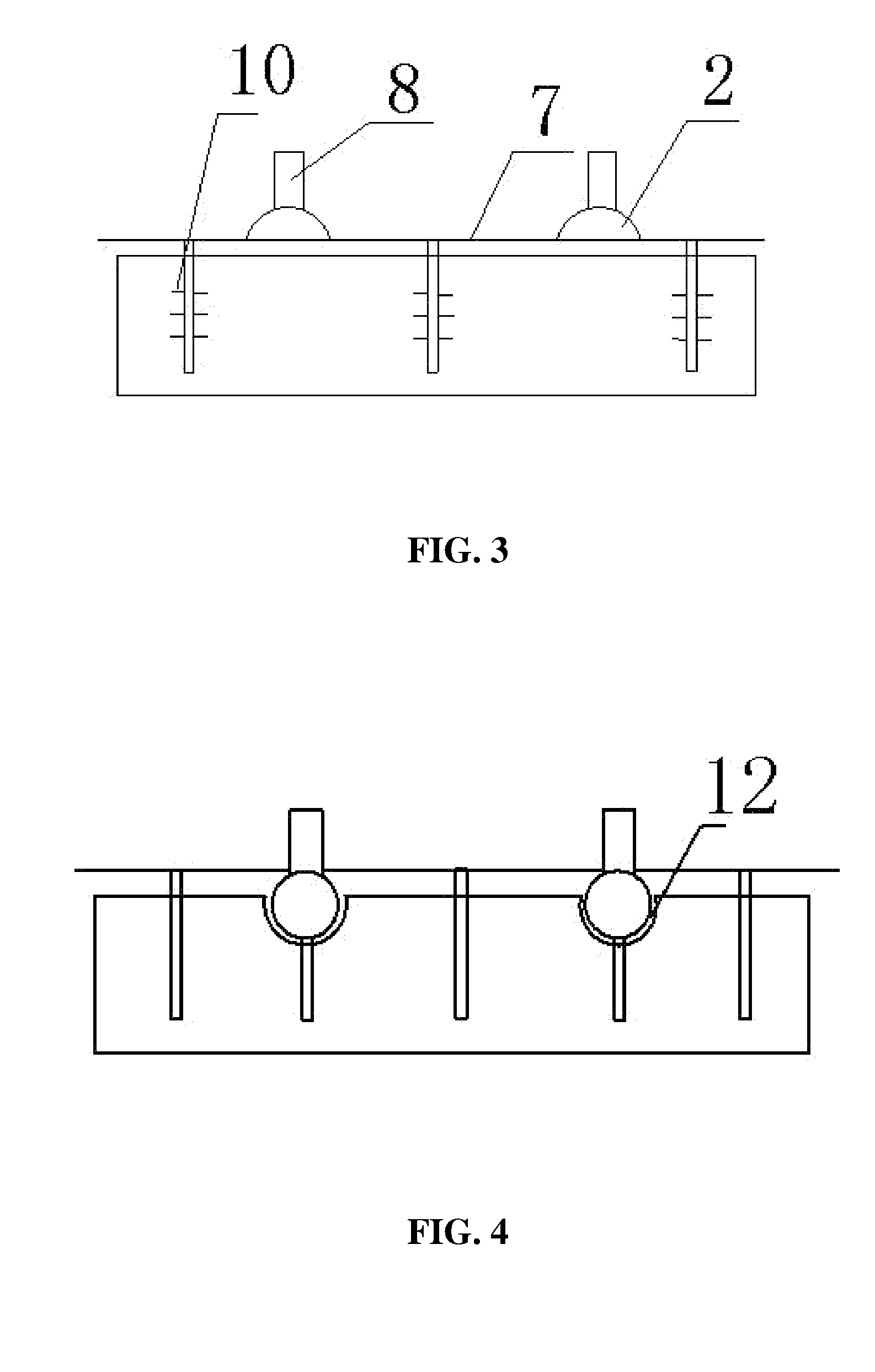Vacuum sealing drainage device for bleeding wound tissue
a drainage device and wound tissue technology, applied in the field of vacuum sealing drainage device for bleeding wound tissue, can solve the problems of air leakage, inconvenient sealing of wounds, and complex above-mentioned methods, and achieve the effects of low air permeability, increased time of maintaining elasticity, and low air permeability
- Summary
- Abstract
- Description
- Claims
- Application Information
AI Technical Summary
Benefits of technology
Problems solved by technology
Method used
Image
Examples
Embodiment Construction
[0048]Further description of the invention will be given below in conjunction with accompanying drawings, and they are not to be construed as limitation to the invention and are illustrative only. Merits of the invention will be more readily and understandable from the following detailed description.
[0049]As shown in the drawings, a closed negative pressure drainage device for a bleeding wound tissue, of the invention comprises a multi-hole foam cushion 1 contacted with the bleeding wound tissue, a drainage pipe 2 with a side hole, a sealing film 3, a connector 4, a drainage container 5, and a vacuum source 6, and further comprises a glue film 7 and an leading-out pipe 8. The glue film 7 is disposed above the multi-hole foam cushion 1, an opening of the side hole of the drainage pipe 2 is contacted with the multi-hole foam cushion 1, the leading-out pipe 8 is connected to the drainage pipe 2, and disposed above the glue film 7, the sealing film 3 is sealed on the glue film 7, the le...
PUM
 Login to View More
Login to View More Abstract
Description
Claims
Application Information
 Login to View More
Login to View More - R&D
- Intellectual Property
- Life Sciences
- Materials
- Tech Scout
- Unparalleled Data Quality
- Higher Quality Content
- 60% Fewer Hallucinations
Browse by: Latest US Patents, China's latest patents, Technical Efficacy Thesaurus, Application Domain, Technology Topic, Popular Technical Reports.
© 2025 PatSnap. All rights reserved.Legal|Privacy policy|Modern Slavery Act Transparency Statement|Sitemap|About US| Contact US: help@patsnap.com



